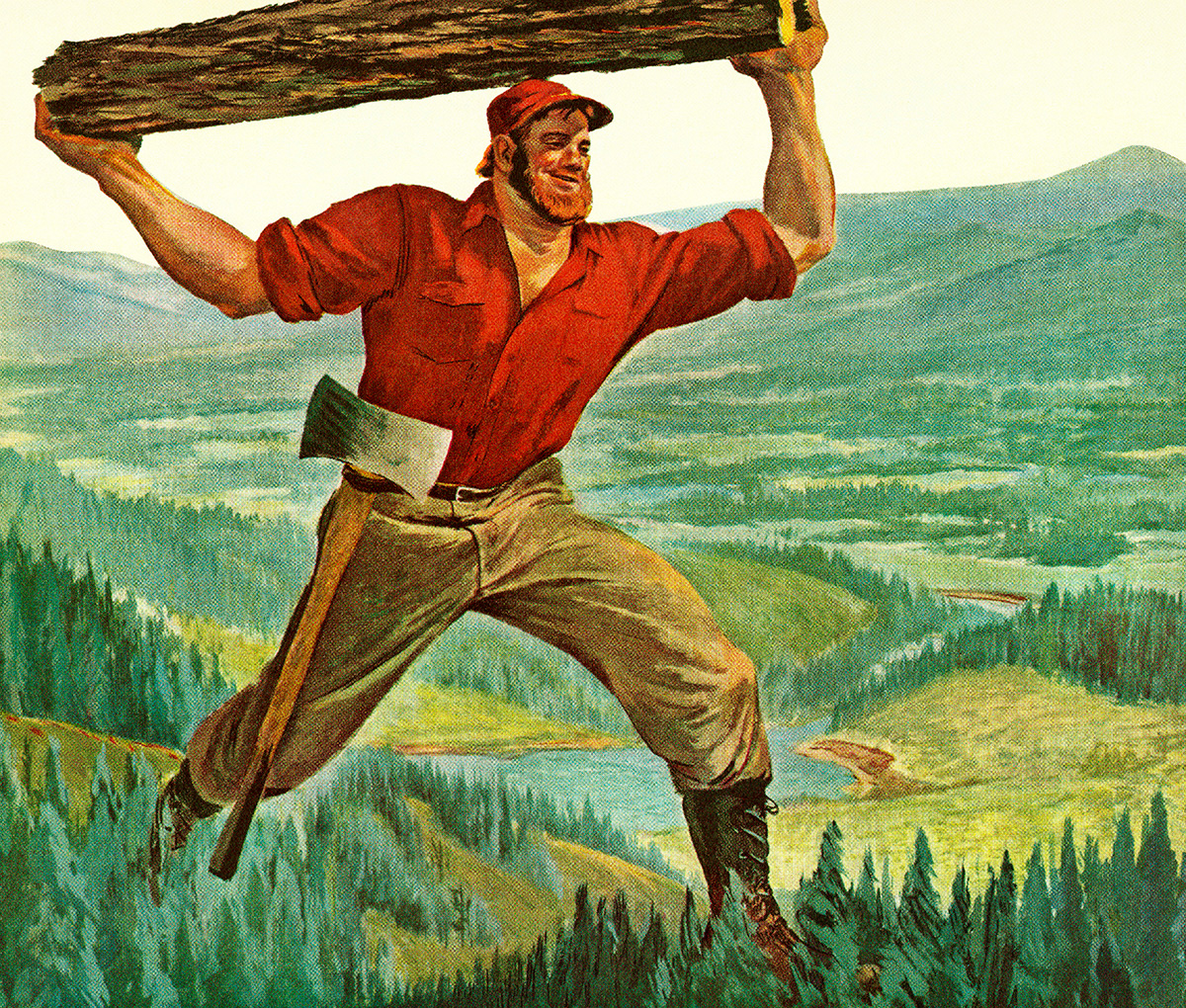Throughout its history, the lumber industry has seen its fair share of innovations, changes, and even famous lumbermen. Over the last few decades, however, the fame of some of the industry’s prominent lumbermen has fallen off. Whether it’s due to potentially controversial environmental concerns or simply the passing of time, many of these lumbermen’s names and stories are beginning to be lost to history.
At Conner, not only do we provide industrial lumber products, but we feel that it’s part of our job to ensure that the history of our industry is not forgotten. That being said, let’s dive in and learn about 5 of the most influential lumbermen in history.
1. Samuel Miller
Not much is known about Samuel Miller’s early life, but what he did in 1777 would forever change the landscape of the lumber industry. In the 18th century, sawmills were manufacturing centers that involved a ton of manual labor. Using pit saws, workers would toil away for hours just to cut a few logs.
In 1777, Samuel Miller filed British Patent #1152. His invention, as it came to be known, was the circular saw. Using a coordinated series of simple machines, Miller was able to devise a way to power a saw in the shape of a circle. Although that may sound extremely simple to us in 2022, in 1777, this was an extremely important advancement.
Miller’s circular saw was able to fraction processing times and make the lives of mill workers everywhere significantly easier. This simple, yet remarkable, innovation changed the way that sawmills operated forever. Going forward, Miller’s circular saw design was improved upon by various lumber professionals and is still, at the most basic level, being used to this very day. Although not a lumberjack by any means, this invention brought Miller into the conversation with many of the world’s most famous lumbermen.
2. John Henry Kirby
Born in 1860 in Tyler County, Texas, John Henry Kirby grew up in the East Texas timberlands that would one day give him the nickname, “The Prince of Pines.” Although Kirby had little formal early education, he went on to study law at the University of Georgetown, and then to clerk in the Texas State Legislature.
Using contacts he made in the state legislature, Kirby was able to provide legal services to a group of investors from Boston. With the money he made from this job, Kirby, along with some of the investors, purchased a rail line that connected Beaumont, TX to San Augustine, TX. This rail line facilitated the transportation of mass amounts of lumber throughout East Texas.
In 1900, after Kirby sold the rail line, he founded the Kirby Lumber Company. At its height, Kirby himself controlled more than 300,000 acres of East Texas timberland. Combined with the company’s additional assets, the Kirby Lumber Company was the largest producer of lumber in Texas and throughout the region. This gave Kirby his initial claim to fame, the nickname the “Prince of Pines,” and made him one of Texas’ most famous lumbermen.
3. Charles Mears
Born in 1814, Charles Mears got to witness first-hand westward expansion and its benefits to the American lumber industry. Originally from a small town outside of Boston, Mears’ father owned a small lock on the first-ever canal constructed in the United States. This lock gave Mears and his brothers the experience of transporting goods on the water that they would later need in life.
In the 1830s, the recent mapping of the Michigan territory drastically increased public attitude toward immigration for the region – Mears included. By 1836, Mears and his brothers were taking the Paw Paw River to access Lake Michigan. Over the next few decades, Mears and company made a living exploring, settling, and harvesting lumber all along the western shore of Lake Michigan.
All-in-all Mears went on to purchase 40,000 acres of Michigan timberland, plant 15 sawmills, and establish 6 ports to transport the lumber to Chicago. With these purchases and establishments, Mears became one of the most famous men in all of Michigan.
4. Frederick Weyerhaeuser
Hailing from Germany, Frederick Weyerhaeuser would be one of the greatest US immigrant success stories of the 19th century. Born in 1834, Weyerhaeuser immigrated to the United States at the young age of 18. Through a series of wise, if not extremely fortunate, investments, Weyerhaeuser quickly climbed the ranks to have controlling interests in several lumber companies throughout the upper Midwest.
During the US Reconstruction Era (1865-1877), Weyerhaeuser helped organize the Mississippi River Boom and Logging Co. This company went on to handle almost all of the logs milled on the Mississippi River. Needless to say, this quickly made Weyerhaeuser one of the richest men in the country.
Weyerhaeuser’s exploits, however, were far from over. In 1900, Weyerhaeuser made a ridiculously large, and cheap, purchase of timberland in the Pacific Northwest – 900,000 acres for $6/acre. With this purchase, Weyerhaeuser founded the Weyerhaeuser Timber Company, later renamed the Weyerhaeuser Company. With its continued success, the company is still one of the nation’s largest lumber production companies.
5. Fabian Fournier
We’ve all heard the legend of Paul Bunyan, right? He was a famous lumberman in American folklore, had a blue pet ox, and could cut down a forest in one fell swoop of his ax. Although many of these tall tales are far from realistic, Bunyan very well may be based on a famous French-Canadian lumberman.
Fabian Fournier was a French-Canadian lumberman who moved south to the logging camps of Michigan shortly after the Civil War. Fournier, who’s recorded to be around 6 feet tall at a time when that was a head taller than the average man, was an enormous specimen in the 19th century. Going by the nickname of Saginaw Joe, Fournier’s reputation for drinking, brawling, and having two sets of teeth (?) was known to many lumbermen throughout Michigan. Unfortunately, Fournier’s life was ended in 1875 in Bay City, Michigan – an infamous logging town.
Through a controversial and closely watched murder trial, the legend of Fournier grew as witnesses took the stand. On top of his already growing reputation, Fournier’s fame only grew when his killer was acquitted by a Michigan court. From here on, the legend of Paul Bunyan was born in the early 1900s.
We Hope You’ve Learned a Thing or Two About These Lumbermen!
Through innovation, wise investments, important connections, and even bar fights, all of these lumbermen have had a significant impact on the lumber industry and the cultures that surround it. Certainly, the names of these lumbermen don’t deserve to be forgotten! Today, we hope that you’ve learned a thing or two about our industry’s history and now have a grown appreciation of the lumbermen who have gone before us.



![[PRESS RELEASE] Conner Industries Announces Major Guardian Packaging Expansion](https://conner.b-cdn.net/wp-content/uploads/2024/10/Guardian-Packaging-Expansion-500x383.jpg)
![[PRESS RELEASE] Conner Industries Announces Website Dedicated to Integrated Packaging Division](https://conner.b-cdn.net/wp-content/uploads/2024/05/Conner-Packaging-Blog-500x383.jpg)


